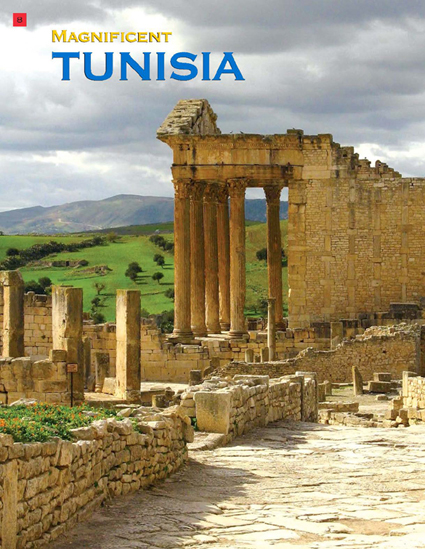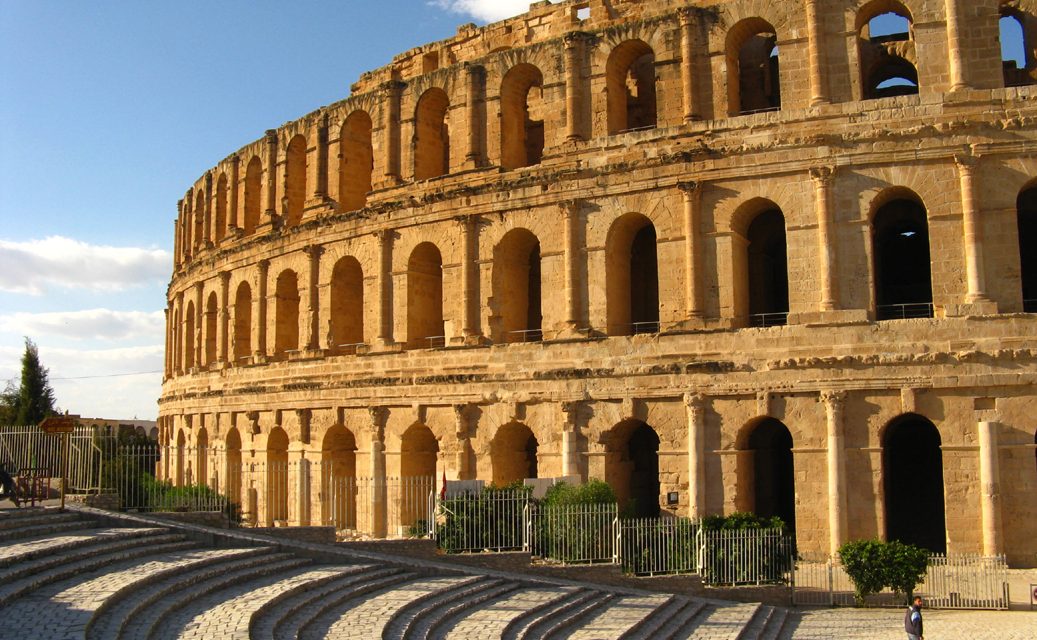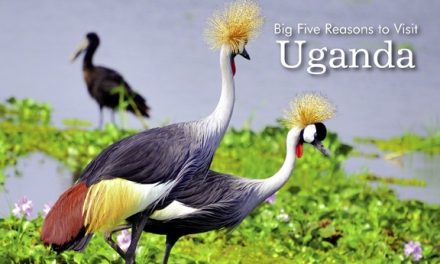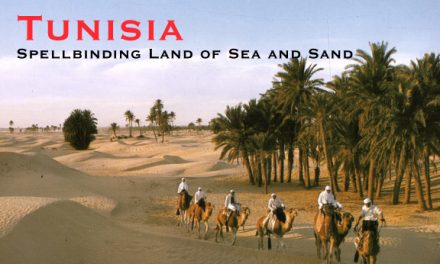Magnificent
TUNISIA
Published in the Summer 2012 Issue of Canadian World Traveller
By Michael Morcos

On the less travelled part of the Mediterranean lies sometimes forgotten and sometimes overlooked magnificent Tunisia. On this part of my second trip I would travel north and west to straddle the coast. This would prove to be in great contrast to the dry deserts and the beautiful landscapes to the south.
Both are compelling and if I had to choose between a trip to the north or south, I would object by picking a trip to visit both. As in my last visit, we would land in the capital region of Tunis. From here, we would enjoy a relaxing day on the sandy beaches and a rejuvenating Thalassic Therapy message before hitting the road for six days of exploration.
La Palais Du Baron
This palace boast an Arabic design which was built in the year 1912 A.D. The renowned La Palais Du Baron was created by French and German artist Baron Rodolphe d’Erlanger. The opulent rooms of this Arabic-Andalusian is comprised of beautiful ornaments, jewels and furnishings inside the massive interior. I found out that presently the palace holds the stamp of the Mediterranean Music Centre where numerous concerts are lined up year-round.
Carthage Port Punique
I enjoyed this charming area, also known as the “Sea of Empires.” Cartage Port Punique has facilities that have been in service since the pre historic times of the ancient emperors rule in Tunisia. Comprising of the commercialized and military ports, Cartage Port Punique is positioned along high walls. The purpose of these walls was to have a resourceful military port where maximum number of boats could be hidden in the harbour.
One highlight of Cartage port Punique is that this area was first battle ground of the first Punic war. As a UNESCO World Heritage Site and hallmarked territory in Tunisia, it gives notice to this city due to its rich history related to the 11th century, regarding the text of the Appian that has been recorded by historians as well as archaeologists.
Tunis Medina
Tunis Medina is the commercialized and administrative trading hub of the city. Close to the Mediterranean Sea and Lake Tunis, this place has three fractions – the old city or Median, the French Quarter and lastly the northern and the southern parts of the capital. Tunis Medina is segmented among the central core, which still abides by the era of its groundwork, which is the 8th century.
This outstanding layout of buildings has been urbanized from a small defrayal which is known as Oppidum tunicense, revealed by Pliny the Elder. The design was completed during the 13th century under the rule of the Hafsid dynasty.
The way the doors of the Tunis Medina are decorated along with the engravings of the gems and jewels is a symbol of the sociological importance of the historical times along with the geometric architectural style of art work. Some of the imagery is homage to figures and events such as the Goddess of Fertility, St Augustine of Hippo and the Ottoman Empire in Turkey.
Musee De Bardo
Musee De Bardo, which is one of the renowned museums of Tunisia, was originally a palace of the Hafsid dynasty during their rule in the 13th century. Musee de Bardo is located in the outer suburbs of Tunis. This astonishing museum has a colossal collection of Roman Mosaics and antiquities from ancient Greece and Tunisia.
On the road and meeting the locals
Travelling through Tunisia is as beautiful as one can imagine. I was able to observe the daily lifestyle of the residents along the seaside. Tunisian agriculture and farms have become a hallmark of the local landscape. I indulged in a road trip on the curvy roads of Tunisia which was an enthralling experience, especially when I was able to stop and have a chat with friendly farmers.
The town of Tabarka
My next stopover was Tabarka. I loved this seaside atmosphere of the place, including its amazing waters which are surreal and crystal clear. Two great things to see are the gorgeous Mediterranean corals that that surround the area and an exquisite Genoese castle, framed by the Khroumerie Mountains enriching the spectacular environment. This is the perfect playground for sightseers, scuba divers and fans of spending days at the sandy beach in the sunshine.
Bulla Regia
Located in the North Western side of the city of Tunisia, Bulla Regia is an archaeological site with the Bardo Museum the city of Jendouba, dating back to the Hadrianic era. The lovely shades of colours is prevalent in the dome shaped architecture.
Each subversive dwellings corresponds to the three palaces at the northern end, which can be explored by guided tour. The baths, the forum and the theatre the key places to visit at the archaeological site of Bulla Regia.
Dougga
My visit to the mesmerizing theatre of archaeology Dougga was impressive and something I’ve always wanted to view. This archaeological site has been named a UNESCO site in the 1990s, for its history dating to ancient Roman days.
The overall town of Dougga is popular for its Islamic influence. For example, the established Mosque of Sidi Sahbi, on the eastern side of the capital, was built during the 14th century.
Kairouan
Known as the land of pastries, Kairouan offers mouth-watering baked goods like that of the Makraoudh and Zelbia, usually made with sugar and various nuts, like pistachios. This place is a hallmark of Tunisia, sometimes called the “Cultural Capital of Islam” and is also a UNESCO site. The mosque of Uqba is located here, which is known as the fourth pillar of Islam. The name of this city is derived from the word “Carvan,” which means a “Resting Place”.
This great Muslim pilgrimage site is has distinctive features. In the northwest turn of the yard is a little space with a historical grave plus a burial stone dressed up with green, red and white accents. However, if you are not Muslim, you can only admire this space from the outside.
Colisee El Jem
The auditorium at El Djem was made by the Romans under the rule of emperor Gordian in Thysdrus in the year 238 AD. The key purpose to use this space for gladiator shows as well as the fierce chariot races. I found this monument to be one of the most impressive in Tunisia, especially since it looks particularly stunning at sunset.
Port El Kantaoui
Positioned at the north of the Sousse of the Central part of Tunisia, Port El Kantaoui was built in 1979 as a large tourist attraction. At this popular spot, I had a wonderful time hitting the links. The 36 hole PGA approved course also has options nearby for paragliding, yachting and water skiing. Taking a walk down the cobblestone streets here is another pleasant activity to try.
Medina and Ribat De Sousse
Sousse, located in the heart of Tunisia, is a trade hub for processed food, textiles, transport equipment and olive oil, to name a few. The University De Sousse, located in the area, has a rich Roman and Vandal background and is worth a visit. The Ribat today stands as a fort as well as a religious fortification.
I reached a level of contentment that is always wonderful to experience when taking trips abroad, as this destination has a fulfilling amount of memorable things to see and do that embody a rich cultural and historical background famous in this part of the world.


















